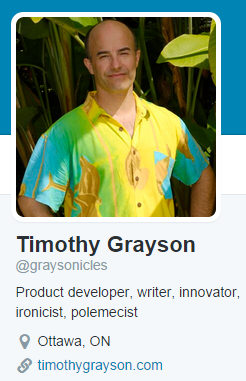A while back there was a journalistic leitmotif about whether we (Canada) were adequately training our grads for our collective future well-being. The gist was a lament for non-practically trained university graduates (i.e., not business (under)grads or engineers) being shunted from productive higher-paying jobs in favour of those MBAs and engineers, and other professional school finishers.
The stories were directed to the economics and so on of why this is a terrible situation not only for those underemployed but also for Canadian society at large, which ultimately funds higher education, and for the employers passing up these people. For the employers, the argument is that these folks'the arts grads, for clarity--bring with them everything that employers say they want except for instant work-readiness--something that business training provides allegedly.
My take was a little different.
While the authors made good points and arguments, I think that there is much more damage going on by this practice, especially as it applies to the MBA-holding candidate bias. Let me make one entirely different argument for why the bias toward business grads (read: MBAs) and against arts or music or science grads is regressive and suboptimal. It has to do with innovation.
The syllogism is straight-forward.
Premise: Innovation is based on the unusual connection of disparate pieces into combinations that unlock new value. This can be by both bringing new knowledge into the system/situation or by perceiving the system/situation differently.
Premise: MBAs in particular and representing those favoured 'business' education programs, are given high-level trade training (which is what makes them job-ready), which is consistent with the best practices of the trade.
Premise: It is alleged that post-secondary students are all taught to think (even business students), but the ratio of critical thinking training to trade training in the desirable programs is well below one. To the contrary, in the arts and sciences the ratio exceeds 1, sometimes nearing infinity. (In other words: in some arts programs there is NO trade training, only training to think for yourself.)
Conclusion: Therefore, if innovation requires high doses of both different thinking and critical thinking the most likely candidates to achieve that would be anybody but the graduates of the more favoured programs such as MBAs.
QED. And I would hope the reasoning is obvious.
So, not only would looking harder at archeology and biochemistry graduates keep them from behind the espresso maker, it would also raise the potential for innovation by the employer's organization.
Just a thought.
About the Author






